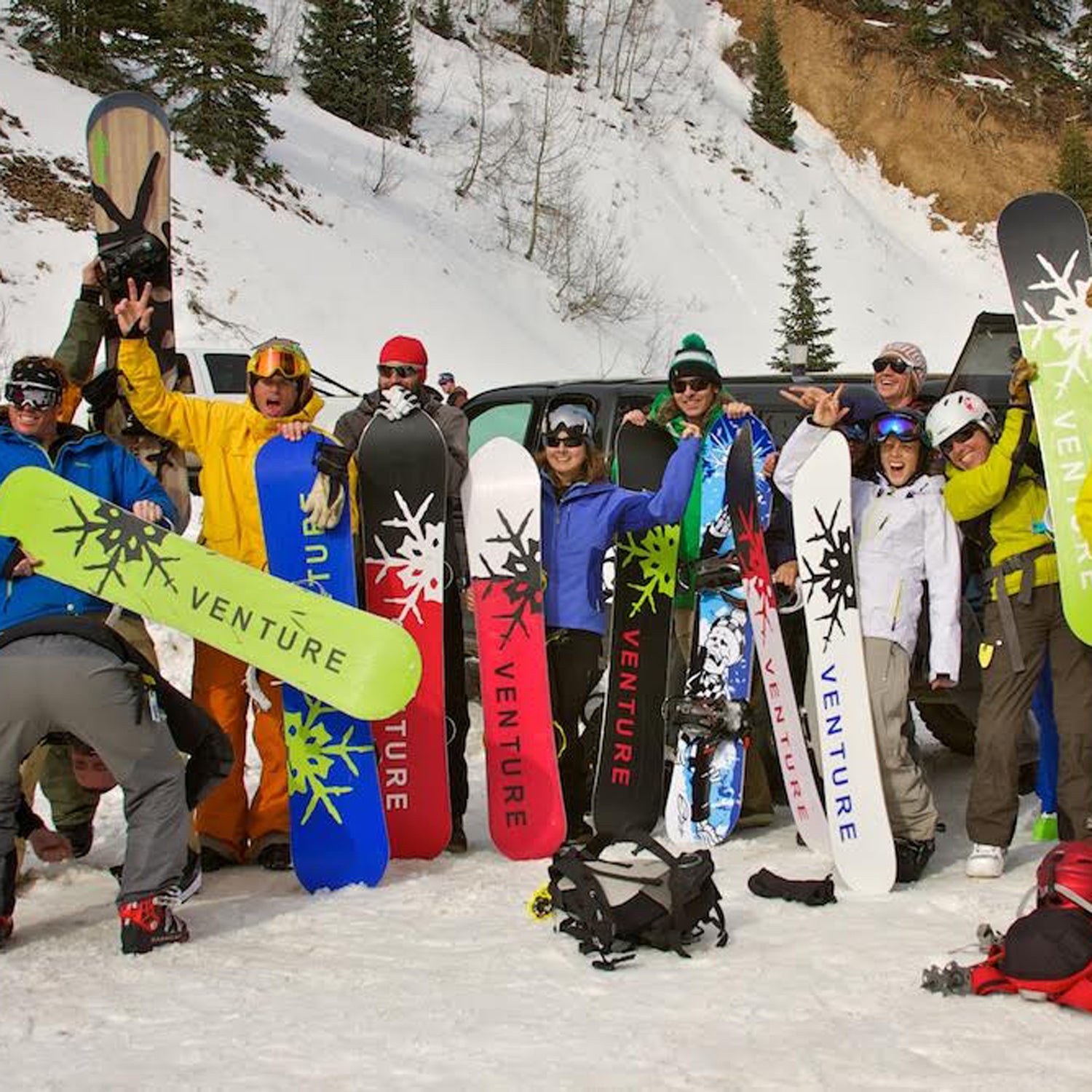On Thursday morning, boutique-board maker Venture Snowboards sent an email to media and released a statement ��announcing it would not deliver any product to market in the 2015/16 season.
Citing “circumstances beyond our control,” the 16-year-old Silverton, Colorado-based company said it planned to continue production at a future date, but in the interim, encouraged its fans to support other small brands in the snowboarding industry.
“Trust us when we say we did everything possible to make it work,” the letter, signed by founders Klemens and Lisa Branner, read. “Venture has been a labor of love for us for more than 16 years. We did it for you, for ourselves, and for snowboarding.”
���ϳԹ��� requested comment through email and phone from both Klemens and Lisa. At the time of publication, neither had responded.
The brand, famous for its high-end, in-house manufactured solids and splitboards, had production models ready for this season. ���ϳԹ��� was one of many media outlets that tested the 2015-16 lineup. But according to one Silverton local, there have been rumors circulating for weeks that something was wrong at the factory.
“They stopped production,” Todd Bove, owner of , told ���ϳԹ��� on Thursday. According to Bove, Venture cut several employees weeks ago. Those people knew enough about what was coming to find other jobs, he says.
The issue, according to Bove, wasn’t popularity of the boards. Bove says his shop rents and sells only Venture snowboards in part because they were so regionally favored. The boards were the de facto ride of Silverton Mountain guides, which in turn piqued clients’ interest in the brand.
After the news broke Thursday morning, Bove says he received multiple calls from customers asking to buy his 12 leftover 2014-15 boards. But at this point,��he's not sure if he can sell his inventory. The boards in the shop��were acquired��through a��consignment arrangement with Venture. It’s been over a week since he spoke with Klemens, and Bove, like others in the industry, is still waiting for more details to emerge in the aftermath of the announcement.
“People really want [the boards],” Bove says, “and they should be out there.”
Venture is proof of how tenuous the market is for small businesses.
While Venture hasn’t formally announced the details of what led to its decision, boutique snowsports manufactures nationwide face increasing pressure from both big companies and fellow small brands.
“You’re always influenced to try and increase your [production] numbers as quickly as possible, because the higher the number, the lower price [the manufacturer] can give [the consumer] per unit,” says founder and owner Jared Mazlish, whose small ski��company is based out of Breckenridge, Colorado.
“In order to have all the costs that are incumbent in a business and try to make more money, you’re feeling forced to grow quickly and increase production and debt, even though the end result is a recipe for disaster if demand suddenly dips,” he says. “You’re walking a thin line each year.”
Mazlish’s company, now in its eleventh season, had to control its growth for this reason, reigning in production because��of market volatility. With finite resources, especially when compared to high-volume producers, one misstep can cause serious problems. “If you overdo��it and get into debt, you don’t have any recovery zone,” he says. ��
Mike Waesche, who founded in 2008, agrees: “There’s a lot of pressure to move volume,” he says, “and you’re trying to support jobs, too.”
For Waesche, that’s meant a more conservative growth prediction year to year, and an internal goal to sell through inventory by December. “What’s realistic for another industry—say 20 percent—isn’t for us,” he says. It means going on the low end of production estimates to ensure that the shelves are empty and demand stays high. ��This plan for “slower, more sustainable growth” helps��his company preserve its principles, he says, allowing it to retain its Made-in-America commitment.
So what happened to Venture Snowboards? Was it a numbers game and they were simply too aggressive in past seasons, making too many boards? It’s hard to say until its founders formally speak about what happened. But in the meantime, Venture is proof of how tenuous the market is for small businesses. No matter the popularity, boutique manufacturers can be��just a season away from the presses shutting down.��


